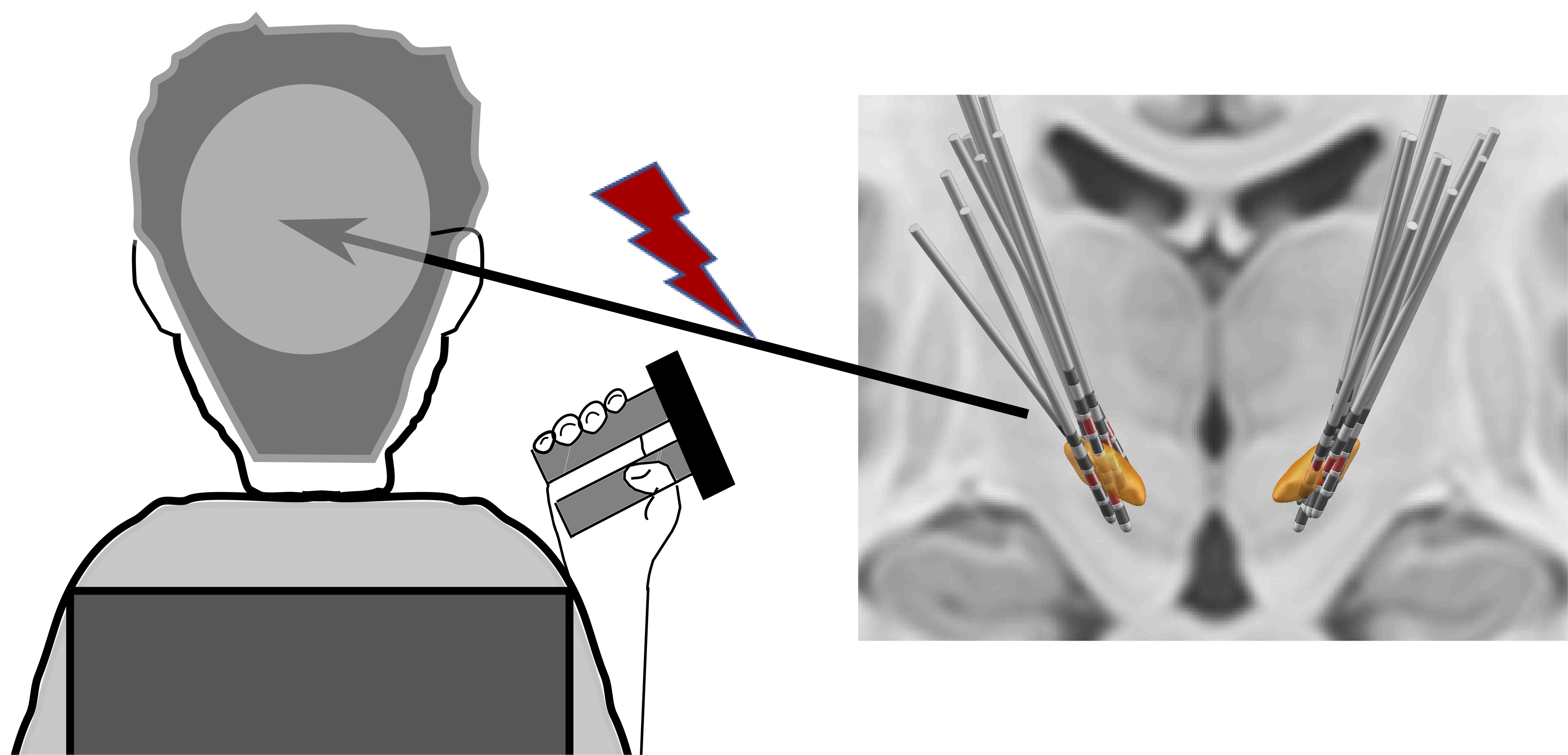Dynamic modulation of subthalamic nucleus activity facilitates adaptive behavior.
In this study, we show that the activity in a deep brain structure called the subthalamic nucleus reflects movement outcomes and consequent movement adaptation. This can be modified through bursts of electrical stimulation to the subthalamic nucleus in people with Parkinson’s.
Adapting actions to changing goals and environments is central to intelligent behavior. There is evidence that the basal ganglia play a crucial role in reinforcing or adapting actions depending on their outcome. However, the corresponding electrophysiological correlates in the basal ganglia and the extent to which these causally contribute to action adaptation in humans is unclear. Here, we recorded electrophysiological activity and applied bursts of electrical stimulation to the subthalamic nucleus, a core area of the basal ganglia, in 16 patients with Parkinson's disease (PD) on medication using temporarily externalized deep brain stimulation (DBS) electrodes. Patients as well as 16 age- and gender-matched healthy participants attempted to produce forces as close as possible to a target force to collect a maximum number of points. The target force changed over trials without being explicitly shown on the screen so that participants had to infer target force based on the feedback they received after each movement. Patients and healthy participants were able to adapt their force according to the feedback they received (P < 0.001). At the neural level, decreases in subthalamic beta (13 to 30 Hz) activity reflected poorer outcomes and stronger action adaptation in 2 distinct time windows (Pcluster-corrected < 0.05). Stimulation of the subthalamic nucleus reduced beta activity and led to stronger action adaptation if applied within the time windows when subthalamic activity reflected action outcomes and adaptation (Pcluster-corrected < 0.05). The more the stimulation volume was connected to motor cortex, the stronger was this behavioral effect (Pcorrected = 0.037). These results suggest that dynamic modulation of the subthalamic nucleus and interconnected cortical areas facilitates adaptive behavior.

2023. PLoS Biol, 21(6)e3002140.
2023. Mov Disord, 38(5):818-830.